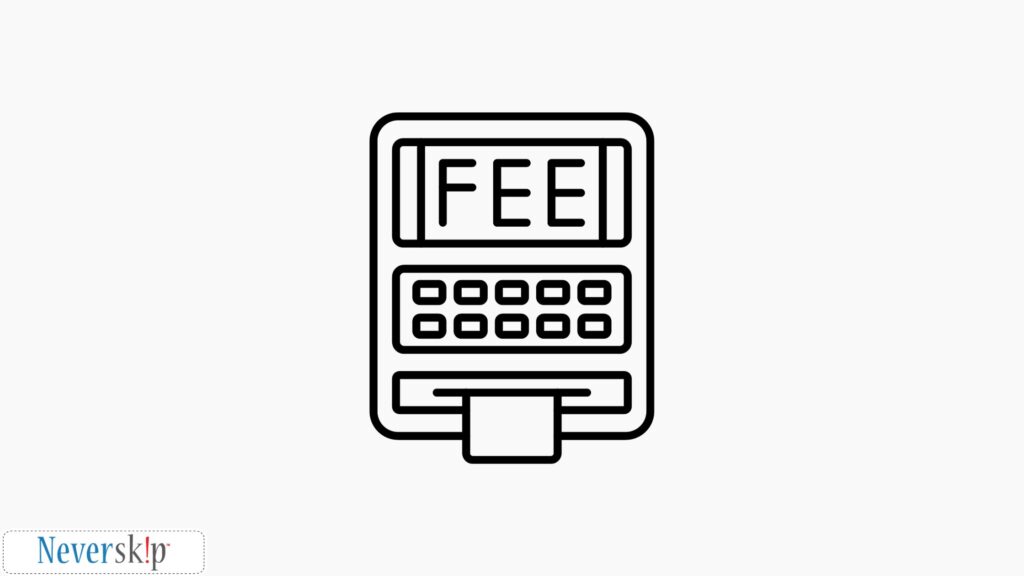Have you ever wondered what fuels the smooth operation of educational institutions behind the scenes? It’s not just dedicated teachers and eager students; it’s also the machinery of fee management software.
For school teachers and administrators, the choice of the right fee management software can be a pivotal decision with far-reaching consequences. It’s not merely about crunching numbers; it’s about ensuring that the financial gears of a school run seamlessly. But why is it so crucial for schools to choose the right fee management system?
In the fast-growing education sector, where resources must be optimized, budgets efficiently managed, and transparency in financial operations maintained, the selection of the right fee management software is a decision that carries tremendous weight.
School teachers and administrators shoulder the responsibility of shaping the future, and to do so effectively, you must have tools at your disposal that simplify financial processes, enhance accountability, and empower you to allocate resources judiciously.
To ease your task, in this blog, we will walk you through the critical considerations that school teachers and administrators should keep in mind when choosing fee management software. So, let’s get started!
What Is a Fee Management System?

A Fee Management System is a comprehensive software solution designed to streamline, automate, and optimize the process of handling financial transactions and fee-related operations within educational institutions, such as schools, colleges, and universities.
This sophisticated software serves as the financial backbone of educational organizations, offering a robust platform for managing various types of fees, tuition payments, and related financial activities.
A fee management system facilitates the efficient collection, tracking, and management of fees from students, parents, and other stakeholders. It provides a centralized platform that simplifies financial operations, enhancing transparency, accuracy, and accountability in the management of educational finances.
See More: How a Fee Management System Can Improve the Cashflow for Your School?
Key Considerations To Choose the Right Fee Management System
Choosing the right fee management system is a critical decision that requires careful consideration. Let’s explore the key factors that educational administrators and decision-makers should take into account when selecting the ideal fee management system.
1. High Scalability and Flexibility
When evaluating fee management systems, it’s crucial to consider the scalability and flexibility of the software. Educational institutions vary widely in size, and their needs may change over time. Therefore, the selected system should be able to adapt to the institution’s growth and evolving requirements.
Look for a system that can handle varying fee structures, accommodate changes in the number of students, and support different types of fees, including tuition, extracurricular activities, transportation, and more. Scalability ensures that the fee management system can grow with the institution, reducing the need for frequent software updates or replacements.
2. Robust Integration Capabilities
The successful implementation of a fee management system often depends on its ability to integrate seamlessly with other existing software and systems used by the educational institution.
Look for a system that offers integration options with student information systems (SIS), accounting software, communication tools, and other relevant platforms. Integration ensures data consistency, eliminates manual data entry, and facilitates real-time information sharing between different departments and stakeholders within the institution.
A well-integrated fee management system simplifies administrative processes and reduces the risk of errors.
3. User-Friendly Interface
An intuitive and user-friendly interface is essential for ensuring that the fee management system is accessible and usable by a wide range of users, including administrators, teachers, parents, and students.
The interface should be easy to navigate, with clear menus, labels, and instructions. Training requirements for users should be minimal, allowing them to quickly adopt and utilize the system effectively. A user-friendly interface enhances the overall user experience and reduces the learning curve associated with implementing new software.
4. Security Measures
Security is a paramount concern when dealing with financial data and sensitive information within an educational institution. The selected fee management system should employ robust security measures to protect financial transactions, payment details, and personal information of students and parents.
Look for features such as data encryption, secure payment processing, authentication protocols, access controls, and regular security updates. Compliance with data protection regulations and industry standards is also crucial to ensure the highest level of security for the institution’s financial data.
5. Detailed Reporting and Analytics
A comprehensive fee management system should offer robust reporting and analytics capabilities. Reporting tools should provide customizable reports and dashboards that offer insights into fee collections, outstanding dues, revenue trends, and other financial metrics.
Advanced analytics can help educational institutions make informed decisions, identify areas for improvement, and plan their financial strategies effectively. The ability to generate detailed financial reports on demand or schedule automated reports is a valuable feature that enhances financial transparency and accountability in fee management.
6. Compact Support and Training
Adequate support and training are essential components of a successful fee management system implementation. Educational institutions should consider the availability of customer support from the software provider, including channels such as email, phone, and live chat.
Additionally, inquire about training resources and materials provided by the vendor to ensure that users can maximize the system’s functionality. Training sessions, user guides, tutorials, and online resources can help administrators, teachers, parents, and students become proficient in using the fee management system efficiently.
7. Cost and Return on Investment (ROI)
While cost is a significant consideration, it should not be the sole determining factor when choosing a fee management system. Instead, focus on the long-term value and return on investment (ROI) that the system offers.
Consider the total cost of ownership, including licensing fees, implementation costs, ongoing maintenance, and support expenses. Evaluate how the system’s features and capabilities align with the institution’s goals and objectives.
A system that streamlines financial operations, reduces administrative overhead, and enhances transparency can provide a substantial ROI by optimizing resource allocation and improving the overall financial health of the institution.
8. Data Backup and Recovery
Data integrity and disaster recovery capabilities are crucial aspects of an automated fee management system. Ensure that the selected system offers robust data backup mechanisms to safeguard financial and student information in the event of system failures, data corruption, or other unforeseen issues.
A reliable system should provide regular automated backups, data redundancy, and efficient recovery processes to minimize disruptions and data loss.
9. Mobile Accessibility and Parent Engagement
In today’s digital age, mobile accessibility is paramount. Consider a fee management system that offers mobile apps or responsive web interfaces, allowing parents and stakeholders to access fee-related information and make payments conveniently from their smartphones or tablets.
Mobile accessibility enhances parent engagement by providing real-time updates on fee dues, payment receipts, and other financial matters, fostering transparency and communication between schools and parents.
10. Compliance and Regulations
Educational institutions must adhere to various financial regulations and compliance standards. Verify that the fee management system complies with relevant regional, national, and international financial regulations, including data protection laws and payment industry standards.
Compliance ensures that the institution’s financial data remains secure and that all financial transactions are conducted in a lawful and accountable manner.
See More: Top Challenges in Fee Management in Schools and How To Overcome Them?
To Conclude,
In the complex and dynamic area of educational finance, choosing the right fee management system is a decision of paramount importance. It’s not just about optimizing administrative processes; it’s about enhancing financial transparency, improving cashflow, and ultimately ensuring that educational institutions can focus on their core mission of providing quality education.
In this scenario, Neverskip’s fee management system stands out as a prime candidate that meets and exceeds these key criteria. With its comprehensive feature set, including scalability for institutions of all sizes, robust data security, seamless integration capabilities, and user-friendly interface, Neverskip empowers educational institutions to streamline fee management, enhance financial transparency, and optimize cashflow.
Choosing Neverskip’s fee management system is not just a strategic investment; it’s a commitment to elevating the financial health and operational efficiency of educational institutions. With Neverskip, educational administrators can confidently navigate the complexities of fee management, knowing they have a trusted partner that aligns with their mission and supports their vision of delivering quality education.
Book a free demo today to get started.








